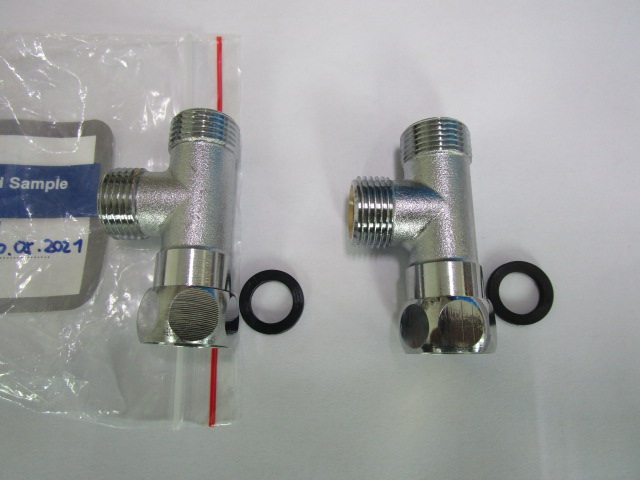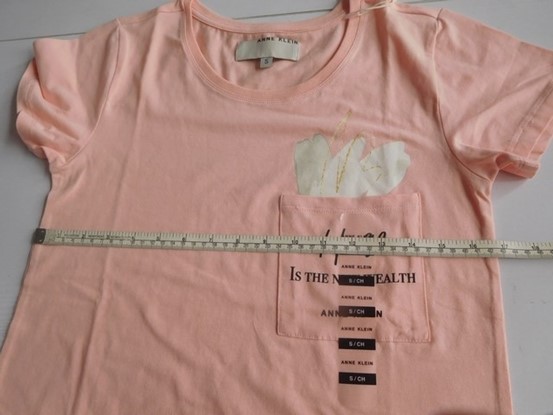
The world of fashion is as dynamic as it is diverse, with countless styles, designs, and trends emerging every season. However, amidst this diversity, one aspect remains constant and crucial – the importance of accurate sizing in clothing. Whether you are a consumer shopping for the perfect fit or a manufacturer ensuring quality control, accurate measurements are the foundation of a successful clothing industry. In this article, we will explore the significance of precise sizing in apparel and provide a comprehensive guide on how to measure dimensions correctly during the garment inspection process.

Contents
1.Why Accurate Sizing Matters
Accurate sizing is not just a matter of aesthetics; it has a profound impact on both consumers and manufacturers. Here are some reasons why sizing is of paramount importance:
1.1. Customer Satisfaction
For consumers, nothing is more frustrating than receiving a garment that does not fit as expected. Ill-fitting clothing can lead to discomfort, reduced self-esteem, and ultimately dissatisfaction with the purchase. This dissatisfaction can result in returns, negative reviews, and damage to a brand’s reputation. In contrast, well-sized clothing enhances the customer experience and encourages repeat business and brand loyalty.
1.2. Cost Reduction
Manufacturers also benefit from accurate sizing. When garments are consistently sized, there is a lower likelihood of returns and exchanges due to sizing issues. This reduces the costs associated with returns processing, restocking, and potential product damage. Moreover, accurately sized clothing requires fewer alterations and adjustments during production, saving both time and resources.
1.3. Brand Reputation
Brand reputation is closely tied to the consistency and accuracy of sizing. Brands known for providing well-fitting clothing gain a reputation for quality and reliability. Conversely, inconsistent sizing can lead to a loss of trust among consumers. A strong reputation for sizing accuracy can give a brand a competitive edge in the market.
1.4. Sustainability
Sizing accuracy also contributes to sustainability efforts in the fashion industry. Ill-fitting garments are more likely to be discarded or go unworn, leading to increased textile waste. By producing clothing with precise sizing, manufacturers can reduce the environmental impact associated with excess production and waste.
2.Key Measurements in Apparel Inspection
To ensure accurate sizing in the clothing industry, it is essential to measure key dimensions of a garment consistently and correctly. The following are some of the most crucial measurements:
2.1. Chest/Bust
The chest or bust measurement is taken around the fullest part of the chest for both men’s and women’s garments. It is an important measurement for tops, dresses, and outerwear. Ensure that the tape measure is straight and snug but not tight when taking this measurement.
2.2. Waist
The waist measurement is typically taken at the natural waistline, which is the narrowest part of the torso. For skirts, pants, and dresses, this measurement is crucial for determining the fit around the waist area.
2.3. Hip
The hip measurement is taken around the fullest part of the hips and buttocks. It is particularly important for bottoms such as pants, skirts, and shorts. Like the chest measurement, it should be taken snug but not tight.
2.4. Inseam
The inseam measurement is the length from the crotch seam to the hem of the pants or shorts. It is crucial for ensuring the correct length and fit of bottom garments. The measurement should be taken along the inside leg, following the leg’s natural curve.
2.5. Sleeve Length
Sleeve length is measured from the shoulder seam to the end of the sleeve. It is vital for garments with sleeves, such as shirts, blouses, and jackets. Ensure that the tape measure follows the curve of the arm.
2.6. Shoulder Width
The shoulder width is the distance between the two shoulder seams of a garment. It is essential for determining the fit of tops, dresses, and outerwear. Measure from the outer edge of one shoulder seam to the outer edge of the other.
2.7. Collar/Collarband
For garments with collars, the collar or collarband measurement is taken around the neck’s circumference. It is essential for shirts, blouses, and dresses with collars. Measure snugly but not too tightly.
2.8. Rise
The rise measurement is crucial for pants and shorts and is taken from the crotch seam to the top of the waistband. It determines the fit of the garment in the crotch area.
3.Tools and Techniques for Measuring
Accurate measurements require the right tools and techniques. Here are the essential tools and some tips for precise measurements:
3.1. Tape Measure
A high-quality, flexible tape measure is essential for accurate measurements. Ensure that the tape measure is not stretched or twisted, as this can lead to inaccuracies. It should lie flat against the body or garment.
3.2. Mannequins and Dress Forms
Mannequins and dress forms are useful tools for measuring garments during the inspection process. They provide a consistent and stable platform for taking measurements and assessing fit.
3.3. Straight Pins
When measuring garments on a flat surface, straight pins can be used to secure the tape measure in place. This helps ensure that the measurement is taken accurately without the tape slipping or moving.
3.4. Measurement Charts and Guides
Having measurement charts and guides specific to your brand or product line can be immensely helpful. These charts can provide clear instructions on where and how to take each measurement, ensuring consistency across all garments.
3.5. Consistent Measurement Technique
It is crucial to use the same measurement technique consistently across all garments in a product line. This consistency helps ensure that garments are sized uniformly and accurately.
4.Best Practices for Apparel Inspection
To maintain sizing accuracy during apparel inspection, follow these best practices:
4.1. Sample Inspection
Inspect a random sample of garments from each production batch. This sample should be representative of the entire batch and include various sizes and styles.
4.2. Use Measurement Templates
Create measurement templates for each garment style in your product line. These templates should outline where and how to take each measurement. Use these templates during the inspection process to ensure consistency.
4.3. Quality Control Checks
In addition to measurements, perform thorough quality control checks during inspection. Look for stitching errors, fabric flaws, and any other issues that may affect the fit and overall quality of the garment.
4.4. Document Findings
Record all measurements and inspection findings for each garment. This documentation is essential for tracking quality control and identifying any trends or issues in production.
4.5. Conduct Fit Tests
Incorporate fit tests into the inspection process whenever possible. Fit tests involve trying the garment on a model or dress form to assess its fit and comfort. This step can help catch sizing issues that may not be apparent from measurements alone.
5.Addressing Sizing Issues
If sizing issues are identified during the inspection process, it is essential to address them promptly and effectively. Here are some steps to consider:
5.1. Review Production Process
Examine the production process to identify the root causes of sizing issues. This may involve reviewing patterns, cutting techniques, and sewing procedures to ensure consistency and accuracy.
5.2. Adjust Sizing Charts
If necessary, make adjustments to the sizing charts for your brand or product line. This may involve modifying size specifications to better align with customer expectations and market standards.
5.3. Communicate with Suppliers
If you work with external suppliers, communicate any sizing issues and collaborate on solutions. Suppliers should be aware of your sizing requirements and be willing to make necessary adjustments.
5.4. Conduct Fit Testing
Regularly conduct fit testing with models or dress forms to assess the fit of newly produced garments. This proactive approach can help catch sizing issues before they reach consumers.
5.5. Implement Continuous Improvement
Sizing accuracy is an ongoing process. Continuously gather feedback from consumers, analyze returns data, and monitor sizing consistency to make continuous improvements to your production process.
Conclusion
Accurate sizing is the cornerstone of a successful and customer-oriented clothing industry. Whether you are a consumer seeking the perfect fit or a manufacturer striving for quality control, precise measurements and inspection processes are vital. By following the guidelines outlined in this article, you can help ensure that garments are consistently sized and meet customer expectations. Remember that sizing accuracy is an ongoing effort that requires attention to detail, communication, and a commitment to continuous improvement. In doing so, you can enhance customer satisfaction, reduce costs, and build a strong reputation for your brand in the fashion industry.




